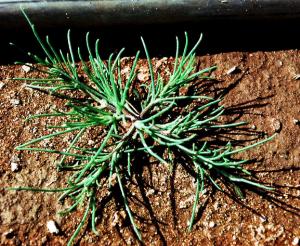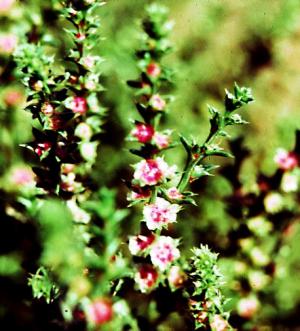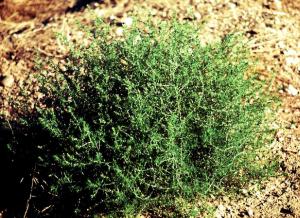CONTENTS
Biology and Management
Registered Herbicides
[Return to weed
Identification]
[Return to Weed
Management]
[Home] |
|

|

|
| Russian Thistle Seedling |
Russian Thistle Flowers |

|
Russian thistle is an annual. This weed
reproduces by seed and a single plant may produce 20,000 to 50,000 seeds. Seeds germinate
quickly, even after brief or limited precipitation. The plants are well branched, round
bushy that grow 1/2 to 3 feet high. The stems have reddish or purple strips. The leaves
are alternate, long, and very thin or needle-like. Flowers are small and inconspicuous and
develop in the upper leaf axils. Each flower has a pair of spiny bracts. Mature plants
break off at ground level and tumble, spreading the seeds. This species is a host of sugar
beet leafhopper, which transmits curly top of sugar beets. This weeds is common in drier
areas and in dryland cultivation systems. It is found in overgrazed rangeland, disturbed
waste areas and in wheat, sugarbeets, potatoes, and mint east of the Cascade Mountains. |
| Russian Thistle Mature
Plant |
Description |
This section contains information on identification of
the different life stages of Russian Thistle. Select Biology and Management from the
Contents Menu for more information on the biology and management, or select Registered
Herbicides for the herbicides that are registered to control this weed in mint. |



